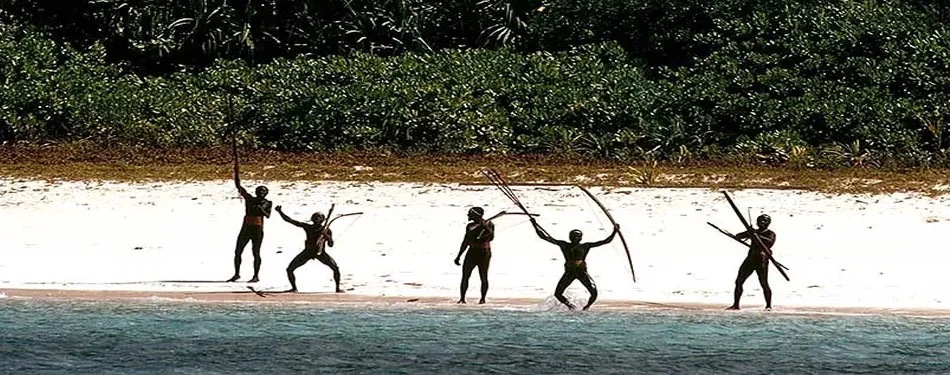Blog Details

Impact of Colonial History on Andaman
The Andaman Islands—often imagined as a tropical paradise with turquoise waters and white sands—hold a history far more complex than their postcard-perfect image. Beneath the serene beauty lies a past shaped by colonialism, where the islands served as a stage for imperial ambitions, strategic military use, and human suffering.
From the dark chapters of the notorious Cellular Jail to the transformation of indigenous societies, colonial history has left deep cultural, economic, and social footprints on the Andamans. In this journey through time, we’ll explore how the colonial era molded the islands we know today—and how echoes of that history still resonate.
Early Encounters and Strategic Interest
Long before the British flag fluttered over the islands, the Andamans were home to diverse indigenous tribes—Great Andamanese, Onge, Jarwa, and Sentinalese—living in isolation for thousands of years.
The lure of location
The islands sit at a strategic crossroads in the Bay of Bengal, making them valuable for trade routes and naval dominance. European powers like the Portuguese and the Danish explored the area, but it was the British who recognized its potential for a penal settlement after the 1857 Indian Rebellion.
The British Penal Colony Era
If there’s one chapter that defines colonial Andaman, it’s the establishment of the British penal settlement in 1858.

Aftermath of 1857 and exile to the islands
In the wake of the 1857 uprising, the British sought a remote, secure location to exile rebels, political prisoners, and convicts. The Andamans fit the bill—isolated, surrounded by treacherous seas, and inhospitable for escape.
By the 1860s, the penal colony had become infamous for its harsh conditions. Prisoners endured hard labor, poor sanitation, and brutal punishments. Many perished due to disease, starvation, or ill-treatment.
The Cellular Jail: A symbol of suffering
Completed in 1906, the Cellular Jail in Port Blair remains the most enduring symbol of this period. Designed to keep prisoners in solitary confinement, the structure had 693 cells arranged like the spokes of a wheel. Freedom fighters such as Vinayak Damodar Savarkar and Batukeshwar Dutt were incarcerated here, enduring mental and physical torment.
Indigenous Tribes and Colonial Disruption
First contact and its consequences
Colonial expansion disrupted the delicate balance of indigenous life. British officers attempted to “civilize” tribes, leading to loss of land, exposure to diseases, and cultural erosion. Populations like the Great Andamanese dwindled from thousands to just a few dozen within a century.

Anthropological curiosity vs. human rights
The tribes were often treated as subjects of study rather than as communities with rights. Expeditions documented their languages and customs, but often at the cost of their autonomy and dignity.
World War II and Japanese Occupation
The islands’ strategic position again made them a pawn in global conflict.
Japanese control (1942–1945)
During World War II, Japanese forces occupied the Andamans, pushing out the British. The occupation brought a new set of hardships—food shortages, forced labor, and political executions. The local population was caught between two imperial powers.
Interestingly, the Japanese allowed Subhas Chandra Bose’s Azad Hind Government to symbolically hoist the Indian tricolor here in 1943, marking a rare moment of nationalist assertion amid foreign dominance.
Integration into independent India
After WWII, the British briefly regained control before India’s independence in 1947. The islands became part of the Indian Union in 1950, but the scars of colonialism—both physical and psychological—remained.
Demographic and cultural shifts
The penal settlement brought people from across India, creating a multicultural society. Today’s Andamanese population is a blend of descendants of prisoners, laborers, and settlers, making the islands a unique cultural mosaic.

Colonial Legacy in Modern Andaman
Colonial history continues to influence the Andamans in subtle and visible ways.
Tourism and remembrance
Sites like the Cellular Jail are now preserved as national monuments, drawing tourists and serving as powerful reminders of the cost of freedom.
Land and tribal policies
The displacement of indigenous communities during colonial times has shaped present-day debates on land rights and tribal protection. Strict regulations now aim to safeguard what remains of their territories and traditions.
Infrastructure and governance
The British introduced modern administration, postal services, and ports—many of which laid the groundwork for today’s governance structures.
Conclusion
The Andaman Islands may be marketed today as a serene escape, but their history tells a story of resilience against adversity. Colonial rule brought exploitation and suffering, but it also inadvertently shaped the cultural, demographic, and political identity of the islands.
To walk through the corridors of Cellular Jail or to stand on the beaches once guarded by British sentries is to feel the weight of history. As travelers, historians, or citizens, remembering this past isn’t about dwelling on pain—it’s about honoring the struggles that led to the freedom we cherish today.
If you’re planning to visit, take a moment to look beyond the palm trees and coral reefs. The real treasure of the Andamans lies in the stories they carry.
Ready to plan your trip? Visit Fascinating Andaman to explore guided night kayaking packages and other hidden wonders of the islands.
Search
Categories
Recent Posts






